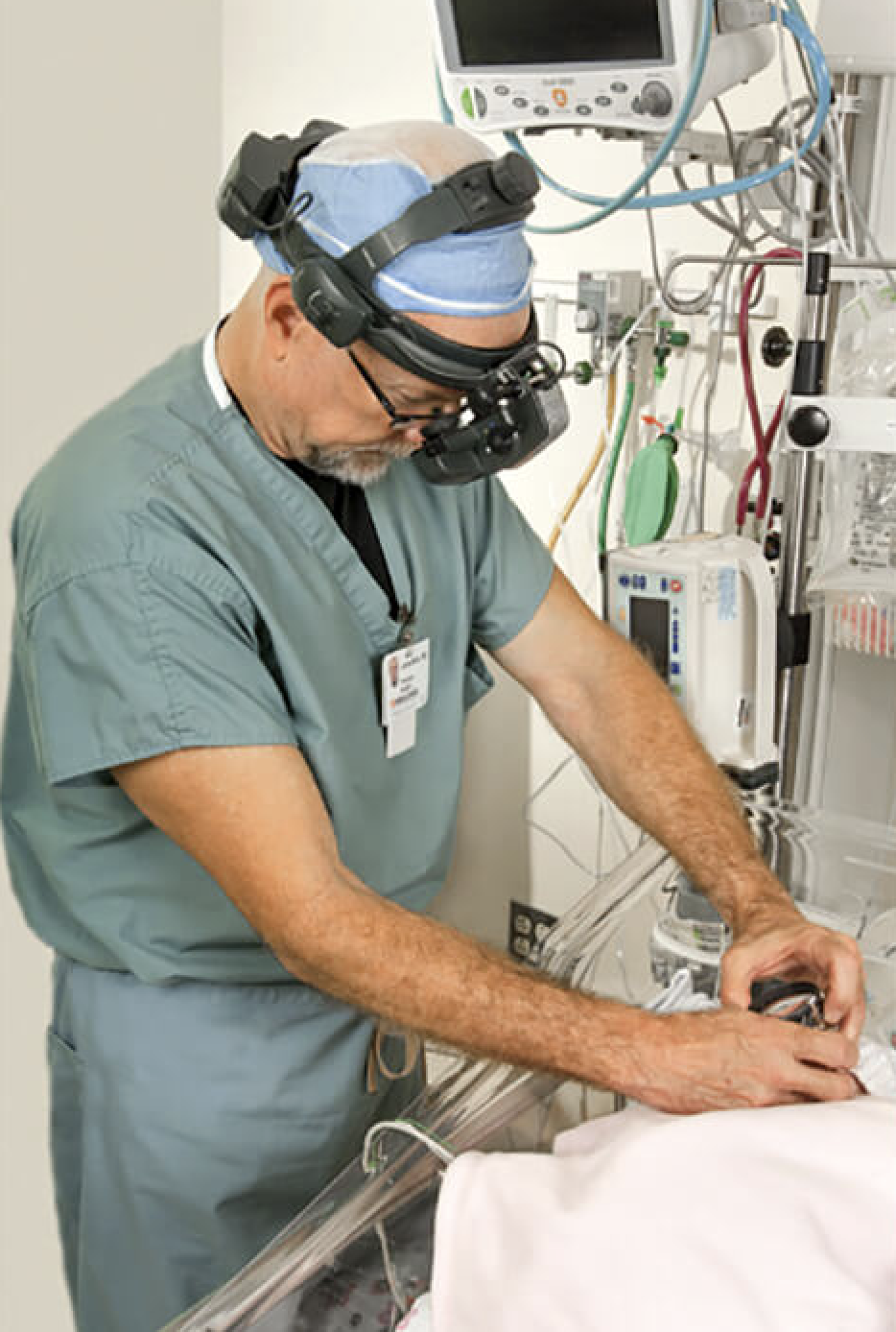Other Conditions’ Care in Chattanooga, Knoxville, and the Tri-Cities Region
The retinal specialists at Southeastern Retina Associates have the necessary experience and skill to diagnose and treat a wide array of disorders that may impact your retina, and such neighboring parts as the vitreous and optic nerve. Among these are ocular trauma, uveitis, and retinopathy of prematurity (ROP).
What is Ocular Trauma?
Ocular trauma, physical or chemical wounds to the eye or eye socket, is a significant cause of vision loss worldwide. These injuries can result from such causes as accidents or foreign objects in the eye. Treatments can range from monitoring and rest to full-blown surgery.
Types of Ocular Trauma
Ocular trauma encompasses many eye injuries, from mild to severe. They include:
- Burns
- Corneal abrasions, scratches to the eye’s clear, protective front area
- Foreign bodies, like dirt or metal, penetrating the eyeball
- Orbital fractures, affecting the surrounding bones and muscles
- Retinal detachment, partial or full retinal separation
Ocular Trauma Signs and Symptoms
Symptoms depend on specific injuries and may appear suddenly or gradually. Any eye part is susceptible to swelling, bleeding, bruising, or redness. You may feel pain when opening, closing, moving, or touching your eye. You can also experience vision changes, like floaters or flashes, or changes to appearance, such as color.
Ocular Trauma Risk Factors
Common trauma risk factors include age, gender, socioeconomic status, occupation, alcohol consumption, history of falls, and conditions like diabetes.
Treatment for Ocular Trauma
Quickly visit your doctor for any ocular trauma, as vision changes and blindness can develop. Treatment depends on the injury type and severity. Minor issues may respond to simple measures, like ice packs, while more serious trauma could require surgery.
Lifestyle Modifications to Manage and Prevent Ocular Trauma
You may reduce risks with careful planning and proper equipment, like protective eyewear. With dangerous items, like chemicals, read all labels and store them properly.
Who is at risk for eye injuries?
Ocular trauma is common, with more than 200,000 annual cases in the United States. Occurring at any age, children and teenagers are more susceptible. Your eyes may also be injured at work or home, making it difficult to avoid all risks.
What Is Uveitis?
Uveitis is inflammation that affects the middle layer of the eye, known as the uveal layer. It can be caused by:
- Infections (viral, bacterial, or fungal)
- Autoimmune and inflammatory diseases (rheumatoid arthritis, lupus, etc.)
- Eye injuries
- Previous eye surgeries
- Eye diseases, such as sarcoidosis
- Systemic infections (syphilis, etc.)
- Exposure to environmental toxins
- Unknown causes
Without prompt treatment, uveitis can be detrimental, causing eye damage or vision loss.
Uveitis Types
Uveitis has four subtypes:
- Anterior uveitis – inflammation in the front part of the eye, including the iris and surrounding tissue
- Intermediate uveitis – inflammation of the middle of the eye and the vitreous gel
- Posterior uveitis – inflammation in the rear of the eye, affecting the choroid, retina, and optic nerve
- Panuveitis – inflammation throughout all layers of the uvea
Uveitis Signs and Symptoms
Uveitis symptoms, dependent on the inflammation site, involve one or both eyes. They include eye redness, floaters, blurriness, pain, reduced vision, and light sensitivity.
Uveitis Risk Factors
While anyone can develop uveitis, those between 20-60 years are more likely. Smoking cigarettes may increase risks. Uveitis may be connected to:
- Prior eye damage
- Injuries
- Eye cancers
- Autoimmune illnesses
- Infections
- Exposure to toxins
Treatment for Uveitis
Anti-inflammatory medications or corticosteroid eye drops are usually prescribed to reduce redness, inflammation, discomfort, and pain. If surgery is necessary, you may (rarely) undergo a vitrectomy. Difficult-to-treat posterior uveitis may require a medication-releasing implant that slowly releases corticosteroids into the eye.
What should I expect with uveitis recovery?
Your recovery speed may depend on the uveitis subtype and symptom severity. Posterior uveitis or panuveitis may heal more slowly than anterior uveitis. The worse your inflammation, the longer it may take to clear up.
What Is Retinopathy of Prematurity?

Babies born prematurely (before 30 weeks) may develop retinopathy of prematurity (ROP), involving neovascularization – abnormal blood vessel growth beneath the retina. Normally, retinal blood vessels complete development around pregnancy’s 9-month point. With premature births, blood vessels can grow in the wrong direction, causing retinal detachment.
ROP Types
Doctors use five stages to track ROP severity.
- Stages 1 and 2 – Babies typically improve without treatment, with healthy vision, although monitoring is needed.
- Stage 3 – Babies may improve without treatment, with healthy vision. Treatment may be needed to prevent neovascularization.
- Stage 4 – Babies require treatment for partially detached retinas.
- Stage 5 – Babies experience complete retinal detachment, and may have vision loss or blindness, with treatment.
Treatment for ROP
ROP treatment options include:
- Laser treatment
- Injections of anti-vascular endothelial growth factor (anti-VEGF) medications
- Eye surgery to repair retinal detachment
Is retinopathy of prematurity common?
About 14,000-16,000 US infants develop ROP annually. Up to 90% have a mild form needing no treatment, while about 1,100-1,500 have a severe form requiring treatment.
Expert Care for Other Conditions at Southeastern Retina Associates
Anyone with diabetes may be at risk for the development of diabetic retinopathy. At Southeastern Retina Associates, our diabetic eye specialists have the necessary experience, skills, and technology to diagnose and treat patients with all levels of diabetic retinopathy. Contact us today to request a consultation for diabetic retinopathy.


